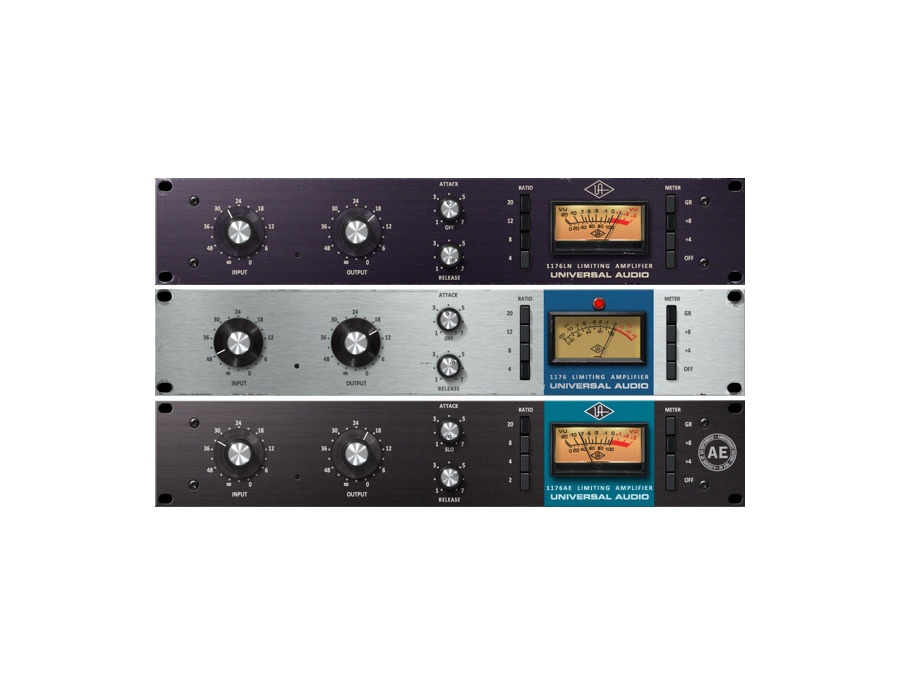

The VC 76 also features fully variable ratio controls for added versatility. However, you may find it difficult to use at first, as the attack and release controls are backwards! On the original 1176, the attack and release knobs went from slow to fast as you turned them left to right, but on the VC 76, they go from fast to slow. While there is no “off” setting on the attack knob, you can set the ratio to 1:1 to give your tracks that fat FET sound without applying any compression. The attack and release controls here retain the familiar 1-7 range. You can create pumping compression effects with the new side-chain input or dial in explosive parallel compression with the wet/dry knob. The VC 76 offers the fast, punchy sound of the 1176 that you know and love with a host of handy new features. Native Instruments VC 76 Native Instruments VC 76 Now that you know why the 1176 is such an iconic piece of studio gear, let’s take a look at some of the plugins upholding its legacy today in the digital domain. began reissuing the 1176LN, based on the blackface Rev E design. The Rev G models made minor changes to the circuitry, while Rev H made several cosmetic improvements. In 1973, UA outfitted the Rev F models with an updated output amplifier featuring a new Class A/B push-pull design. UA then introduced a number of minor changes over the following years with the Rev D and Rev E designs. These new all-black models earned the name “blackfaces”. “Rev C” introduced new low noise circuitry, as well as a new feedback circuit to minimize distortion. Years later, in 1970, the 1176 saw several major changes. Over the next year, Universal Audio made a few minor tweaks to the design with the “Rev A/B” and “Rev B” units. Instead, engineers control the input to drive the signal against a fixed threshold, and can compensate by adjusting the output control if needed.īill Putnam’s original design from 1968 was dubbed “Rev A” and featured a silver faceplate with a blue stripe over the VU meter, earning these units the nickname “bluestripes”. Similar to the 176 tube limiter, the 1176 does not feature threshold controls. This “All-buttons-in” or “British mode” has become a highly sought-after sound, especially for parallel compression. However, engineers quickly discovered that they could push all four buttons simultaneously to create an even more punchy, aggressive, and distorted sound. Release times ranged from 50 mS to 1.1 seconds.įour push buttons allow you to select between four main ratio options: 4:1, 8:1, 12:1 and 20:1. The attack controls also featured an “off” setting, allowing you inject your tracks with the warm, rich sound of FET circuitry without engaging the compressor circuit.

The original’s attack times ranged from a fast 800 µS to a near-instant 20 µS (.00002 seconds). Billed as a “true peak limiter with all transistor circuitry,” the 1176 quickly became a favorite among audio engineers for its ability to limit transients with lightning speed.

in 1968 as a solid-state alternative to his successful 176 tube compressor. The 1176 was originally designed by Bill Putnam Sr. So before we break down the best 1176 plugins, let’s take a look at what made the original 1176 so special. While vintage and reissued hardware models can be found in studios across the globe, the 1176 is also one of the most frequently emulated hardware compressors. Known for its super-fast attack time and colorful tone, this iconic compressor has been used on countless hit records over the last 50 years. The 1176 is arguably one of the most popular compressors of all time.


 0 kommentar(er)
0 kommentar(er)
